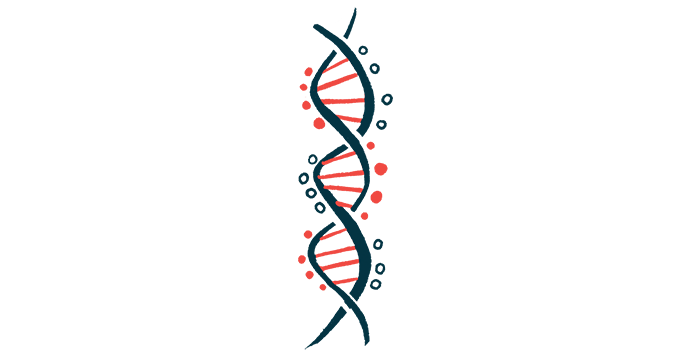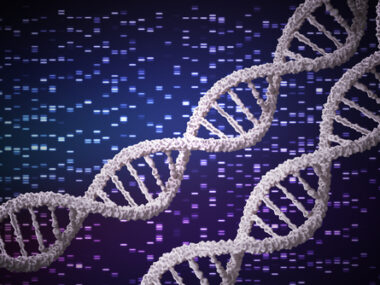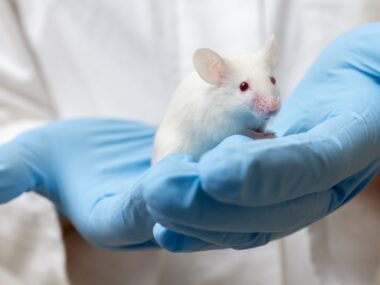Gene mutations undermine connective tissue structure in spEDS
Study findings may advance understanding of disorder's development
Written by |

Mutations in the B3GALT6 gene, a cause of spondylodysplastic Ehlers-Danlos syndrome (spEDS), disrupt the maturation of a type of collagen protein, undermining the structure and strength of connective tissue, according to a new study.
These findings “may have a significant impact on the clinical expression of spEDS and advance our understanding of its [development],“ researchers wrote.
The study, “B3GALT6 mutations lead to compromised connective tissue biomechanics in Ehlers-Danlos syndrome,” was published in JCI Insight.
B3GALT6 mutations disrupt function of key enzyme
SpEDS is a type of Ehlers-Danlos syndrome (EDS), a group of genetic connective tissue disorders marked by unusually mobile joints, soft and stretchy skin, and organ or vascular fragility. Characteristic features of spEDS are weak muscle tone, bowed limbs, and short stature.
B3GALT6 is among the genes associated with spEDS. Mutations in the B3GALT6 gene disrupt the function of the enzyme beta-1,3-galactosyltransferase, or beta-3GalT6. This enzyme adds galactose, a type of sugar molecule, to sugar chains comprising proteoglycans, a type of connective tissue protein.
A lack of beta-3GalT6 activity leads to the production of abnormal proteoglycans, which are thought to weaken connective tissues.
“To date, our understanding of how B3GALT6 mutations affect protein function and [proteoglycan] synthesis and how these defects cause clinical outcomes is limited,” wrote researchers in France who investigated the functional impact of B3GALT6 mutations on biological processes that ultimately lead to spEDS.
When the team tested the activity of three beta-3GalT6 mutations — G217S, D207H, and Y182C — each carried by a spEDS patient, all lab-made versions of the enzyme showed a complete loss of function. Similar results were observed in cells carrying each mutation and in the spEDS patients’ fibroblasts, a type of connective tissue cell.
Further tests suggested that these mutations result in local structural changes within the enzyme, which affect its activity.
Enzyme deficiency altered maturation of type XII collagen
In cell-based experiments, the researchers found that the enzyme beta-1,3-glucuronosyltransferase 3, located in the proteoglycan pathway, partially compensated for the loss of beta-3GalT6 activity, resulting in some proteoglycan production.
The team then compared changes in overall gene activity in the fibroblasts of patients carrying the B3GALT6 mutations with those of six unaffected individuals. Experiments showed genetic changes related to these spEDS mutations were associated with the maturation of fibroblast collagen, the main protein in connective tissue.
When examined more closely, a beta-3GalT6 deficiency altered the maturation of a form of collagen, called type XII collagen. This protein is also defective in a different type of EDS, known as myopathic EDS, which is characterized by muscle weakness and contractures, or tightening, of the large joints.
Our study highlights the importance of better understanding the functional and physical interactions occurring within the ECM and reveals a new link between [proteoglycan] synthesis and collagen maturation, implicating [type XII collagen].
Furthermore, alterations to type XII collagen disrupted the mechanical strength of the extracellular matrix (ECM), the network of molecules that gives tissues their structure. In line with this finding, a lack of beta-3GalT6 also led to higher tissue stiffness compared with controls “due to the loss of [proteoglycan] and subsequent changes in collagen microarchitecture,” the team noted.
“We describe here an integrated multifaceted approach that uncovers the consecutive mechanisms triggered by B3GALT6 mutations, from protein [loss-of-function] to the altered biomechanical properties of [connective tissues] in spEDS,” the researchers wrote. “Our study highlights the importance of better understanding the functional and physical interactions occurring within the ECM and reveals a new link between [proteoglycan] synthesis and collagen maturation, implicating [type XII collagen].”







